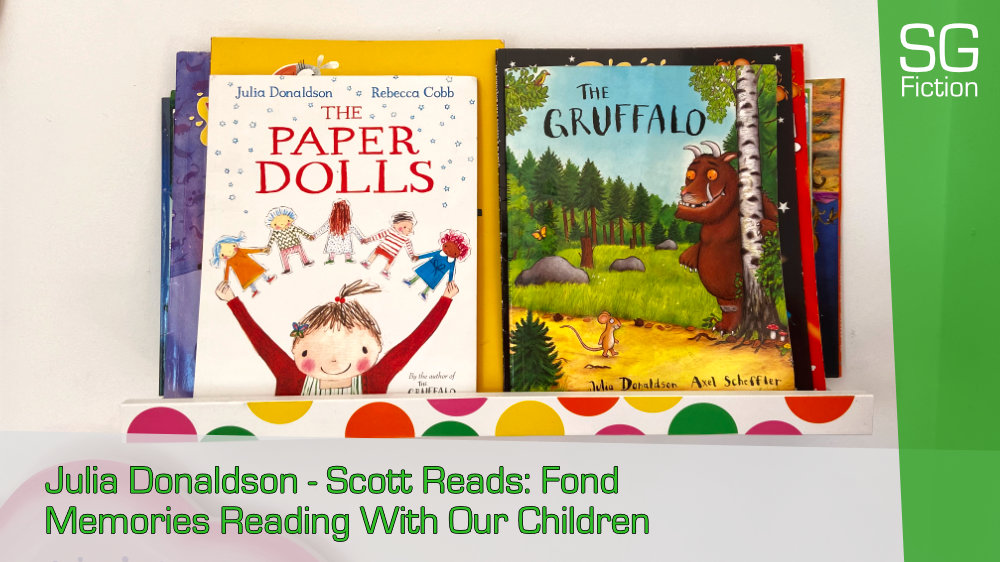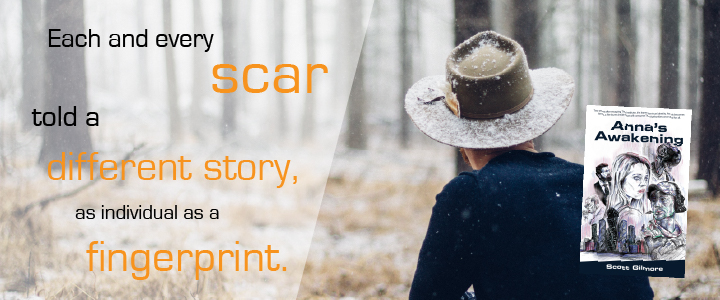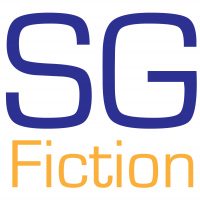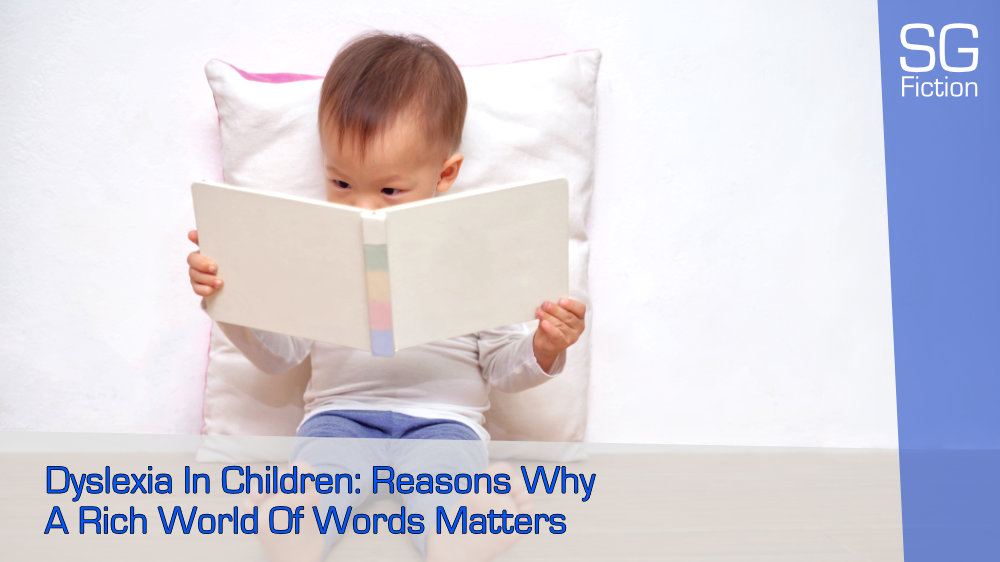Dyslexia in children can present a barrier to both present and future learning. However, by developing a rich world of words, we can grow a love for stories and storytelling.
In this Dyslexia In Children article, you will find information on the following areas:
- What dyslexia is,
- How we teachers & tutors go about tackling dyslexia in children,
- Why a literacy-rich home environment can develop pre-reading skills in little ones, and
- How a love for storytelling can help foster an inquisitive mind that is hungry for stories.
Read the rest of the Dyslexia In Children article and learn about my next steps as a writer and education professional.

Click on this image to read my Scott Reads article on the memories we have reading with our children.
As a fiction author, it is clear that I have a love for reading and fiction books in general. Reading is a hobby and past-time that millions of people around the world take for granted every day.
In my career as an education professional, I have worked with children for over twelve years as a full-time classroom teacher and a private tutor. Throughout this time, I have taught children with reading ages that are five years higher than their actual age. However, I have also witnessed how the crippling effects that dyslexia in children can have.
In this article, I wish to share why I have been less prominent on my Creative Writing Blog and what has happened to my ‘free time’. I also hope to share why a love for stories and storytelling is a vital for young children as they move through life. By assisting young people with dyslexia and further developing my knowledge as an educational professional, I hope to share dyslexia-friendly strategies and skills that they can apply to books and beyond.
What Is Dyslexia?
The website of the British Dyslexia Association define dyslexia as being ‘a learning difficulty that primarily affects involved in accurate word reading and spelling’. This definition was taken from The Rose Report (2009), which was commissioned to review how educators may identify and teach children and young people with dyslexia.
As an experienced teacher, who now runs a successful private tuition business, I have first-hand experience of working with dozens of children with this condition. In my career to date, I continue to develop my certifications in this area and how to assist these young people with their learning. The one aspect of this training that has always stuck with me is the fact that dyslexia in children ranges from child to child. This means that each learner’s needs are individual to them and provision must be tailored to their needs.
In this creative writing blog, I look to consider how dyslexia in children can be supported by ensuring that young people grow up in a literacy-rich environment. There is no quick fix to developing a child’s literacy skills. However, I feel that the following points can help readers learn more about the condition and assist young people around them with dyslexia.
Tackling Dyslexia In Children
When it comes to working with young people with dyslexia, it has to be said that there is no single approach to tackling what can be a crippling learning barrier. It is clear that the majority of classrooms across the UK and Ireland will have teachers who have to make some form of adaptation to their teaching approach for a child or children with dyslexia.
Dyslexia in children can be challenging for teachers and parents alike but, with a tailored approach to teaching and learning, there is no reason why a learner cannot access the activity before them. The needs of each dyslexic child are unique to them. Therefore, the strategies that need to be implemented by parents and teachers ought to be the same.
As a private tutor, I work to apply the training I have undergone to ensure my students learn at their level and with the strategies outlined in the educational psychologist reports. This means that the professional advice is applied on a one-to-one level to boost that child’s attainment.
As a fiction author, I look to books, like the Tom Gates series, by Liz Pichon, and Diary Of A Wimpy Kid, by Jeff Kinney, and hope to use authors like these to inspire dyslexia-friendly stories in the coming years. By allowing young people the opportunity to explore dyslexia-friendly novels, reading can be seen as an activity that is more fun, rather than an onerous task that is to be laboured over.

A Rich World Of Words
A child’s development and exposure to words and language is vital to their experience of communication across the board. At an early age, these little ones can be given a huge advantage over other children of their age by simply reading to them, developing basic common words awareness, and talking to them in a meaningful manner.
Dyslexia in children cannot be ‘cured’ by reading hundreds of books to a child at a young age. However, their experience with literacy, language, and communication is increased many times over by the parent’s engagement and sharing of a rich world of words. Research studies have found that children from ‘literacy rich’ homes enter pre-school with as many as 7000 root words within their spoken vocabulary. Whereas, children from less literacy focused homes can have as few as 3000 words. This is a huge gap and one that can be influenced by adults and parents at home from a very young age.
If independent reading is challenging for a dyslexic child at home, they do not need to read a book to experience the story for themselves. With access to excellent audiobooks from David Walliams, Roald Dahl and others, parents can allow their children to access excellent child-friendly novels.
As a father and Literacy specialist, it is been part of my children’s daily routine to have stories read shared with them from they were very young. By sharing stories and discussing what our children have understood, learned, and made of a particular book, we are given an opportunity to enhance the impact the story has had upon their young minds.
Developing A Love For Storytelling
Whether verbal or written, stories have been a vital part of our social and societal structure for millennia. By sharing stories with children from a young age, we are able to foster a love for storytelling. By doing so, this means young people can have a desire to access stories through visual, audio, or a written medium.
As a full-time teacher, I would have witnessed a number of children fall out of love with reading. For a few, there was a genuine dislike of reading because of the barriers that dyslexia had put before them. However, there were also a large number of learners with dyslexia who loved stories because they were able to access them in a manner that was at their level.
Some of these children were able to engage with stories by:
- Reading ‘Easy Readers’ – A selection of more accessible classic stories that had been rewritten for a younger audience,
- Using Accelerated Reader by Renlearn – This reading programme worked for many learners, as they were able to read books that were specific to their reading age and level. This meant they could experience success when reading independently and develop confidence, and
- Listening To Audiobooks Or Shared Reading – With the abundance of smart devices in schools and at home, audio stories are much more accessible to children of all ages. By stripping away the barrier of solely using a book to engage with a story, reluctant readers were able to experience the magic of storytelling.
As writers, we are all eager to get more people to fall in love with reading. Whether we write for adults or young people, the idea of someone enjoying our writing is central to our goals as authors. Therefore, by allowing access to some of our work as an audio recording, I feel we can engage a much wider audience.
Dyslexia In Children: My Next Steps
As we move further through 2021, I am excited to add another specialisation to my qualifications as an educational professional. In September, I will begin the journey to become a specialist dyslexia tutor and help young people in my local area. By further developing my subject knowledge in the area of dyslexia in children, I can assist learners to develop learning strategies to break down those barriers of Literacy that mean they fail to reach their full potential.
There is no ‘one size fits all’ approach to working with young people with dyslexia. However, by applying a targeted multi-sensory approach in my one-to-one tuition sessions, I know I can help young people find a love of storytelling.
When a child to experiences reading independely at their level, it can open up a world of characters and stories without the need of adult support for the first time. It is the unlocking of this freedom that has pushed me to enrol on my upcoming course with the British Dyslexia Association and be a resource for parents with dyslexic children in my area.

